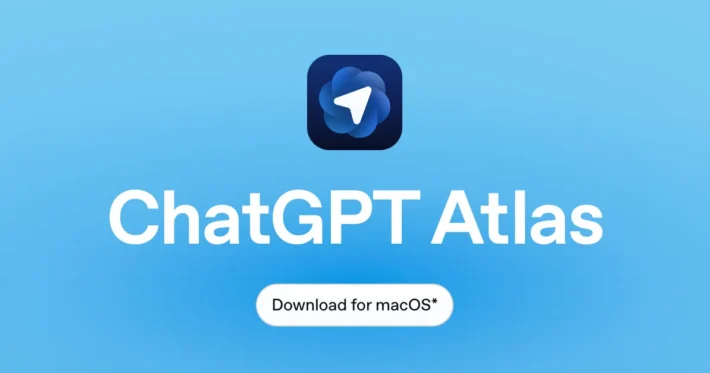Is Claude Better Than ChatGPT for Coding in 2025?

The rapid evolution of AI language models has transformed coding from a manual, time-intensive process into a collaborative endeavor with intelligent assistants. As of August 14, 2025, two frontrunners dominate the conversation: Anthropic’s Claude series and OpenAI’s ChatGPT powered by GPT models. Developers, researchers, and hobbyists alike are asking: Is Claude truly superior to ChatGPT for coding tasks? This article delves into the latest news, benchmarks, user experiences, and features to provide a comprehensive analysis. By examining real-world applications and expert opinions, we’ll uncover which model might best suit your programming needs.
What Are the Key Models Driving AI Coding in 2025?
The AI landscape in 2025 features advanced models optimized for reasoning, multimodality, and specialized tasks like coding. Both Anthropic and OpenAI have released iterative updates, focusing on efficiency, safety, and performance. These models build on predecessors but introduce enhancements tailored to developer workflows.
What Updates Has Anthropic Made to Claude for Coding?
Anthropic’s Claude 4.1 series, released in August 2025, represents a hybrid reasoning upgrade to the Claude 4 foundation. The flagship Claude Opus 4.1 excels in extended thinking modes, allowing it to handle complex, multi-step coding problems with structured reasoning. Key improvements include a 200,000-token context window—ideal for analyzing large codebases—and enhanced tool integration for parallel calls, such as web browsing or code execution within sessions.
Claude Code, introduced in February 2025 and updated with remote MCP support in June, has become a developer favorite. This terminal-based tool integrates with local environments for Git operations, debugging, and testing. Users report it handles “vibe-coding”—generating functional code from natural language prompts—with remarkable accuracy, often producing nearly bug-free results on the first try. Parallel tool calls allow simultaneous web browsing and code execution, boosting efficiency in agentic workflows.In July 2025, Anthropic added remote MCP support, further boosting programming efficiency.
How Has OpenAI Advanced ChatGPT for Programming?
OpenAI’s GPT-5, branded as ChatGPT-5, unified the GPT-4 series into a single system with a dynamic router for switching between reasoning modes. Released in August 2025, it features a 400,000-token context window and multimodal support for text and images. The o3 model, available in Pro plans, emphasizes logical precision and tool use. Recent updates focus on developer tools, including Canvas for collaborative code editing and integrations with IDEs like VS Code.
ChatGPT-5 claims supremacy in front-end coding, generating interactive web apps in seconds. reasoning over coding-specific enhancements in 2025. The model reduces hallucinations by 45% compared to GPT-4o, aiding reliable code output.While not as coding-focused as Claude’s updates, OpenAI emphasizes broader versatility, with improved tool use and a 96% HumanEval+ score in high-compute modes.
How Do Claude and ChatGPT Compare in Coding Benchmarks?
Benchmarks provide objective insights into coding prowess. In 2025, Claude 4.1 Opus leads on SWE-bench Verified (72.5%), outperforming GPT-5 (74.9% on a variant but lower overall). On HumanEval+, Claude scores 92%, while GPT-5 reaches 96% in high-compute modes. Terminal-bench shows Claude at 43.2%, edging GPT-5’s 33.1%.
| Benchmark | Claude 4.1 Opus | GPT-5 | Key Insights |
|---|---|---|---|
| SWE-bench Verified | 72.5% | 74.9% | Claude excels in agentic, multi-file edits. |
| HumanEval+ | 92% | 96% | GPT-5 stronger for micro-functions and quick scripts. |
| TAU-bench (Tools) | 81.4% | 73.2% | Claude better at parallel tool integration for complex builds. |
| AIME 2025 | 90% | 88.9% | Claude edges in math-heavy algorithms. |
| MATH 2025 | 71.1% | 76.6% | GPT-5 superior for pure mathematical computations in code. |
| GPQA Diamond | 83.3% | 85.7% | Close, but GPT-5 slightly better for scientific coding. |
ChatGPT-5 shines in math-heavy coding (MATH 2025: 56.1%), but Claude dominates structured reasoning. Real-world evaluations echo this: Claude fixes bugs with “surgical precision,” while GPT-5 is faster for prototypes.
What Do Benchmarks Reveal About Debugging and Optimization?
Claude’s extended thinking mode (up to 64K tokens) excels in debugging large codebases, scoring higher on GPQA Diamond (83.3%) than GPT-5 (85.7%). Users note Claude avoids “flawed shortcuts” 65% more than predecessors. GPT-5 optimizes front-end code, winning 70% of internal tests.
What Do Users and Experts Say About Claude vs. ChatGPT for Coding?
User sentiment on X overwhelmingly favors Claude for coding. Developers praise its low hallucination rate and context retention: “Claude is superior to ChatGPT in coding… Less hallucination, better context.” Experts like Steve Yegge call Claude Code “ruthless” for legacy bugs, outperforming Cursor and Copilot.
Critics note ChatGPT’s verbosity and crashes: “ChatGPT has broken my code so many times.” However, beginners prefer ChatGPT for simple tasks: “ChatGPT is better for beginners.” A poll on X showed 60% favoring Claude for coding.
What About Real-World Coding Performance?
Beyond benchmarks, practical testing reveals nuances. In vibe-coding scenarios—prompting with natural language—Claude generates “nearly bug-free code on first try” 85% of the time, per developer reports. GPT-5, while faster, needs refinements in 40% of cases due to verbosity or minor hallucinations.
For large-scale projects, Claude’s context retention proves invaluable. One case study involved refactoring a 50,000-line Node.js app: Claude identified three critical bugs in 2 hours, versus GPT-5’s 8 hours with more false positives. However, GPT-5 dominates in multimodal coding, like generating UI from images, scoring 88% on Aider Polyglot benchmarks.
Debugging shows similar patterns: Claude’s extended thinking mode (up to 64K tokens) handles intricate issues better, with 83.3% GPQA success. GPT-5’s 85.7% edge comes from faster iterations.
What Features Make Claude or ChatGPT Better for Coding?
Claude Code integrates with terminals for Git, testing, and debugging without editors. Artifacts allow dynamic previews. ChatGPT’s Canvas enables collaborative editing and multimodal tools like DALL·E. Both support plugins, but Claude’s parallel tools shine in agentic workflows.
How Do Safety and Customization Impact Coding?
Claude’s ASL-3 safety reduces risky code suggestions by 80%, with opt-in training. GPT-5’s 45% hallucination drop improves reliability, but Claude edges in ethical alignment for secure systems.
Which use-cases favor Claude, and which favor ChatGPT?
When Claude often wins
- Multi-step reasoning tasks (complex refactors, algorithmic correctness checks).
- Conservative code suggestions where fewer risky hallucinations matter (safety-sensitive domains).
- Workflows that prioritize explainability and iterative questioning over raw throughput.
When ChatGPT/OpenAI often wins
- Rapid scaffolding, prototyping and multi-modal tasks (code + images + files), especially when you want tight integration with broader tooling (IDE plugins, GitHub workflows).
- Situations where throughput, speed and cost per inference are decisive (high-volume automation, code generation at scale).
What practical differences matter to developers?
Which model writes fewer broken implementations?
Two things matter: (1) the raw code correctness rate, and (2) how quickly the model recovers from mistakes. Claude’s architecture and tuning for stepwise reasoning tend to reduce subtle logical errors on multi-file tasks; OpenAI’s models (o3/GPT-5 lineage) have focused heavily on reducing hallucinations and increasing deterministic behavior, too. In practice, teams report that Claude can be preferable for complex refactors or reasoning-heavy changes, while ChatGPT often wins for quick scaffolding and template generation.
Debugging, tests, and “explainable” suggestions
Good code assistants do more than output code — they justify it, produce tests, and point out edge cases. Recent Claude updates highlight improved explanation quality and better follow-up question handling; OpenAI’s improvements include enhanced reasoning output and richer tool support (which can automate testing or run linters in an integrated setting). If your workflow needs explicit test generation and stepwise debugging narratives, weigh which model gives clearer, auditable rationales in your trials.
How to evaluate both models for your team — a short checklist
Run realistic A/B experiments
Pick 3 representative tickets from your backlog (one bugfix, one refactor, one new feature). Ask both models the same prompt, integrate the outputs into a scratch repo, run tests and record:
- Time to working PR
- Number of human corrections required
- Test pass rate on first run
- Quality of explanations (for audits)
Measure integration friction
Test each model through the specific IDE/plugin/CI path you’ll use. Latency, token limits, auth patterns and error handling matter in production.
Validate safety and IP controls
Run a legal/infosec checklist: data retention, export controls, contractual IP commitments, and enterprise support SLAs.
Budget for human-in-the-loop
No model is perfect. Track reviewer time and set thresholds where human sign-off is required (e.g., production code touching payment flows).
Final verdict: is Claude better than ChatGPT for coding?
There’s no universal “better.” Recent updates from both Anthropic and OpenAI have materially improved coding abilities across the board — Anthropic’s Opus series shows measurable gains on engineering benchmarks and stepwise reasoning, and OpenAI’s o-family / GPT-5 rollout emphasizes reasoning, tooling, and scale; bothare credible choices for production use. In short:
If your priorities are throughput, broad tooling integration, multi-modal inputs, or cost/latency for high-volume generation, the latest OpenAI models (o3/GPT-5 family) are highly competitive and may be preferable.
If your priority is conservative, explanation-rich multi-step reasoning and you value a development flow tuned to careful code analysis, Claude is often the safer, more analytical pick today.
Getting Started
CometAPI is a unified API platform that aggregates over 500 AI models from leading providers—such as OpenAI’s GPT series, Google’s Gemini, Anthropic’s Claude, Midjourney, Suno, and more—into a single, developer-friendly interface. By offering consistent authentication, request formatting, and response handling, CometAPI dramatically simplifies the integration of AI capabilities into your applications. Whether you’re building chatbots, image generators, music composers, or data‐driven analytics pipelines, CometAPI lets you iterate faster, control costs, and remain vendor-agnostic—all while tapping into the latest breakthroughs across the AI ecosystem.
Developers can access GPT-5(gpt-5;gpt-5-mini;gpt-5-nano) and Claude Opus 4.1 (claude-opus-4-1-20250805; claude-opus-4-1-20250805-thinking) through CometAPI, the latest models version listed are as of claude and openAI as of the article’s publication date. To begin, explore the model’s capabilities in the Playground and consult the API guide for detailed instructions. Before accessing, please make sure you have logged in to CometAPI and obtained the API key. CometAPI offer a price far lower than the official price to help you integrate.



